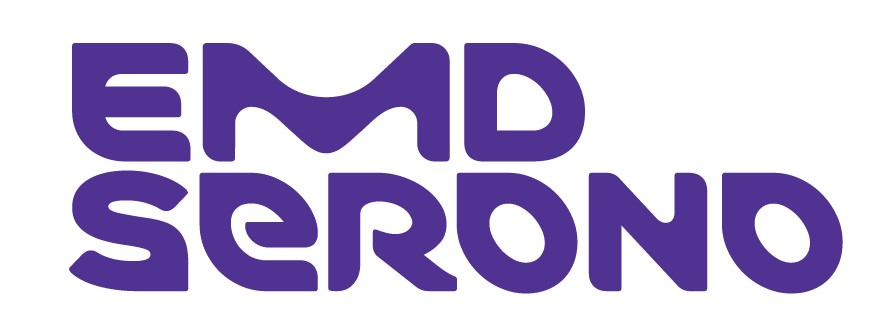
Presented by EMD Serono
Dealing with infertility can be expensive.
But…it is possible to get through infertility and build a family without breaking the bank.
Though a long and complex fertility journey might be out of reach for some, for those who are trying, finding money to help make it happen is possible.
Options include health insurance, grants, loans and payment plans, the old “put it on the credit card” trick, fertility loans with low- or no-interest—even crowdfunding campaigns.
To begin, start by finding out if your state supports fertility coverage, and if so, what kind. RESOLVE, the National Fertility Association, offers a map of the 19 states that have fertility coverage laws.

Going deeper, Davina Fankhauser, co-founder and CEO of the nonprofit Fertility Within Reach, says that there are 11 states that support infertility diagnosis, treatment, and fertility preservation, while two states support coverage for infertility diagnosis and treatment, but not fertility preservation.
Next, find out what your employer-supported health care or personal insurance offers. If there is a fertility insurance plan, ask for the detailed policy related to that coverage.
Fankhauser says: “Read the specifics on medical criteria to make sure you are eligible for the benefits.”
It’s important to read the fine print, to make sure you don’t count on money you’re not eligible for.
A reality for many on infertility journeys is that you’re paying for much of the cost directly, or at least up front. On the flip side, though, some cash-strapped folks TTC might give up before asking around. There could be hidden benefits in areas you might not expect.
A reality for many on infertility journeys is that you’re paying for much of the cost directly, or at least up front.
On the flip side, though, some cash-strapped folks TTC might give up before asking around. There could be hidden benefits in areas you might not expect.
Ask questions at your doctor’s office and on social media, and do your own research. (If you’ve ever applied for college scholarships and grants, you know that there could be pockets of opportunity out there.) For example, for those who don’t have insurance, have limited income, are in the military, and/or are from the LBGTQ+ community.
Briana Barrientos, who has been on her fertility journey for five years, says: “My fertility journey has been really challenging in many ways, but mainly financially— even living in a state (Texas) where fertility coverage is mandated to be offered by employers. Unfortunately, my husband and I do not work for companies that offer health coverage, let alone fertility benefits. Every single clinic visit, diagnostic test, and treatment is out of pocket.”
One challenging self-pay cost is medication. You may need to take a cocktail of fertility-supporting drugs, and if you are going through multiple treatment cycles, as many people do, the financial pressure can add up.
“After our initial diagnosis of ‘unexplained Infertility,’ Barrientos says, “we had two unsuccessful IUI’s. Recently we dove into another round of testing, but to no avail. We were still considered: ‘Unexplained.’ We plan to try two more IUI’s before moving on to IVF. Every protocol for each round of treatment is different, so it’s important to have options!”
One key boost—assistance programs to help some patients afford medication.
EMD Serono is one company responding to patients’ need for this kind of help. Its Fertility LifeLines™ portal helps people determine if they are eligible for its fertility savings programs, and if they are, helps secure financial assistance efficiently. For faster, more specific answers, people can also access live assistance.
The need for quick and convenient answers isn’t going away. The recently updated Fertility LifeLines™ portal is even simpler for anyone to use, thanks to feedback from patients and reproductive health professionals.
Different people have different challenges, including those in the LGBTQ+ and military communities. Regardless of the type of challenges, we want to provide the best fertility medication savings options for those eligible patients wanting to have a baby.’ Fertility LifeLines™ can be accessed online, via web or mobile.
Jeremy Whitelock, interim Head of Fertility and HIV/Endocrinology at EMD Serono, says, “Different people have different challenges, including those in the LGBTQ+ and military communities. Regardless of the type of challenges, we want to provide the best fertility medication savings options for those eligible patients wanting to have a baby. “
Fertility LifeLines™ can be accessed online, via web or mobile. “Since the Covid-19 pandemic began, Whitelock says, “digital health solutions have become essential.”
EMD Serono has actually been helping families for more than 20 years, since the first IVF baby.
“Since that first IVF baby,” Whitelock says, “EMD Serono has played a part in helping 3 million babies being born—globally. Our passion to help patients have families drives us to understand the challenges to help those who want to have a baby.”
Barrientos says: “Thankfully, a lot of places offer special discounts for self-pay patients. Especially when it comes to ordering medication. I have found shopping around and comparing prices is the way to go.”
For those open to digging in and seeking solutions, you may be able to stitch together a patchwork quilt of coverage that’s right for your family.

To learn more, visit www.fertility.com from EMD Serono.
EMD Serono is the Healthcare business of Merck KGaA, Darmstadt, Germany in the U.S. and Canada. Fertility LifeLines™ is a trademark of Merck KGaA, Darmstadt, Germany or its affiliates.

Listen to stories, share your own, and get feedback from the community.


















